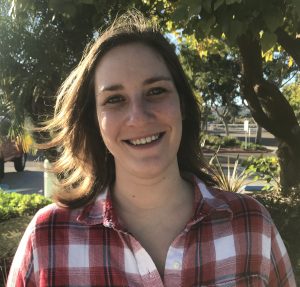Zircon U-Pb dating of tuff in the Monterey Formation of California by Inductively Coupled Plasma Mass Spectrometry

Nicole Fenton
MS Candidate
Advisor: Dr. Dave Kimbrough
Monday Nov. 19th, 2018
CSL 422 – 1 pm
watch Nicole’s defense
Abstract
Extensive deep marine organic-rich strata of the middle to upper Miocene Monterey Formation comprise a major element of California geology and comprise characteristically heterogeneous facies that pose fundamental questions with respect to depositional environments. Variable altered siliceous tuff including bentonite beds are a widespread component of the Monterey Formation and relatively unaltered tuff has been radiometrically dated in prior work by K-Ar and 40Ar/39Ar methods. New laser ablation ICP-MS zircon U-Pb dates from tuff samples collected from four wide spread locations of Monterey Formation are presented here and demonstrate the utility of the zircon U-Pb dating method applied to the Monterey. Three of these locations have well-established chronostratigraphic frameworks based on fossils and magnetostratigraphy: the Palos Verdes Peninsula in the Los Angeles basin, the El Capitan Beach section near Santa Barbara and the Shell Beach section near Pismo Beach. The fourth locality is drill core sample of tuff from the South Belridge oil field in the southern San Joaquin Valley. Samples from these sections include thin (presumably airfall) bentonite tuff, dolomitized tuff and the >10m thick partially bentonized Portuguese tuff at Palos Verdes. Four of the samples yielded precise 206Pb/238U ages with measurement uncertainties less than 200 thousand years and are in excellent agreement with the previously established ages demonstrating the value of zircon dating in addressing questions related to Monterey Formation chronostratigraphy and correlation. The results, however, are not without complexities. Dispersion of 206Pb/238U dates reflected in mean square of the weighted deviates (MSWD) >>1 indicate the grains are not of uniform age and there is ‘scatter’ related to lead loss or mixing of grains of different ages. This presents challenges in how to filter the data to arrive at an interpreted eruption age for tuff samples. Mixed grain ages may reflect pre-eruption magma residence time of zircon in silicic magma chambers that has been documented to range up to at least ~500 ky in young caldera systems. Two of the samples have clearly bimodal age distributions with mean ages that are ~2 million years different from one another indicating incorporation of recycled (antecrystic) zircon that crystallized earlier in the same magmatic system or perhaps reworking of earlier tuffaceous sediment into the deposit. Samples dominated by Cretaceous grains likely reflects reworking of primary volcaniclastic materials as sediment gravity flows.

